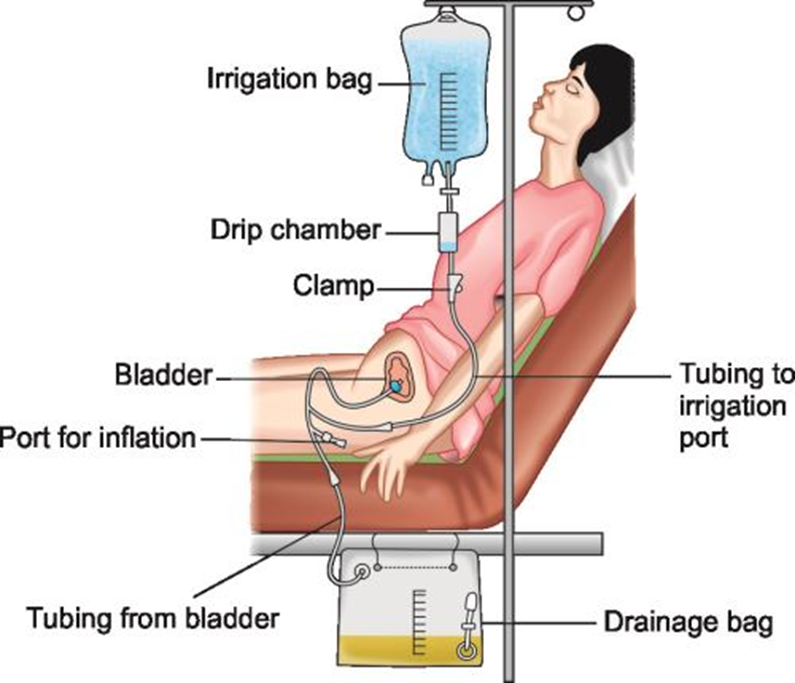A client has an injury to the left ankle requiring partial weight bearing. The client is elderly with a history of balance deficit. Which assistive device would be most appropriate for this client?
Age dose of pain medication
Correct method of administering your own pain medication
Operator can push the PCA button for you if you are asleep
The pain medication is delivered at your nose
The Correct Answer is A
Choice A Reason:
Age dose of pain medication refers to adjusting the dosage of pain medication based on the client’s age. Elderly clients often have different pharmacokinetics and pharmacodynamics compared to younger individuals, which means they may require lower doses of medication to achieve the same effect. This adjustment helps to prevent overmedication and potential side effects, ensuring safe and effective pain management for elderly clients.
Choice B Reason:
Correct method of administering your own pain medication is important for clients who are capable of self-administering their medication. However, this choice does not directly address the issue of balance deficit and the need for an assistive device. While proper medication administration is crucial, it is not the primary concern in this scenario.
Choice C Reason:
Operator can push the PCA button for you if you are asleep is not an appropriate practice. Patient-controlled analgesia (PCA) is designed to allow clients to self-administer pain medication as needed. Allowing someone else to push the button can lead to overmedication and potential complications. This choice does not address the need for an assistive device for balance deficit.
Choice D Reason:
The pain medication is delivered at your nose is not a standard method of pain medication administration. This choice is incorrect and does not relate to the client’s need for an assistive device for balance deficit. Pain medication is typically administered orally, intravenously, or through other appropriate routes, but not through the nose.
Nursing Test Bank
Naxlex Comprehensive Predictor Exams
Related Questions
Correct Answer is A
Explanation
Choice A Reason:
When calculating the fluid balance for a client undergoing continuous bladder irrigation (CBI), the irrigation solution must be deducted from the total urine output. This is because the irrigation fluid is not part of the client’s actual urine production but is an additional fluid introduced into the bladder to prevent or remove blood clots and ensure catheter patency. By deducting the irrigation solution from the total urine output, the nurse can accurately determine the client’s true urine output and fluid balance.

Choice B Reason:
Subtracting the irrigation solution from the intravenous flow sheet as output is incorrect. The intravenous flow sheet is used to document fluids administered intravenously, not those introduced into the bladder. Therefore, this choice does not apply to the management of continuous bladder irrigation.
Choice C Reason:
Documenting the intake hourly in the urine output column is also incorrect. The urine output column should reflect the actual urine produced by the client, not the irrigation solution. Including the irrigation solution in this column would lead to an inaccurate representation of the client’s urine output and fluid balance.
Choice D Reason:
Adding the irrigation solution to the oral intake column is incorrect as well. The oral intake column is designated for fluids consumed orally by the client. The irrigation solution is introduced directly into the bladder and should not be recorded as oral intake.
Correct Answer is A
Explanation
Choice A reason: Applying compression stockings is a key prophylactic intervention to prevent complications of immobility, such as deep vein thrombosis (DVT) and venous thromboembolism (VTE). Compression stockings help improve blood circulation in the legs by applying graduated pressure, which reduces the risk of blood clots forming in the deep veins. This is particularly important for immobile patients who are at higher risk of developing DVT due to prolonged periods of inactivity.
Choice B reason: Raising all side rails is primarily a safety measure to prevent falls and does not directly address the complications of immobility. While it is important for patient safety, it does not have a significant impact on preventing issues like DVT, pressure ulcers, or muscle atrophy. Therefore, it is not considered a prophylactic intervention for immobility-related complications.
Choice C reason: Inserting a urinary catheter is not a prophylactic intervention for preventing complications of immobility. Catheters are used to manage urinary retention or incontinence but can increase the risk of urinary tract infections (UTIs) if not managed properly. They do not address the primary complications associated with immobility, such as DVT or pressure ulcers.
Choice D reason: Using friction-reducing devices is important for preventing pressure ulcers and skin injuries in immobile patients. These devices help minimize friction and shear forces on the skin, which can lead to pressure ulcers. While this is a valuable intervention, it is not as comprehensive as compression stockings in preventing a range of immobility-related complications.
Whether you are a student looking to ace your exams or a practicing nurse seeking to enhance your expertise , our nursing education contents will empower you with the confidence and competence to make a difference in the lives of patients and become a respected leader in the healthcare field.
Visit Naxlex, invest in your future and unlock endless possibilities with our unparalleled nursing education contents today
Report Wrong Answer on the Current Question
Do you disagree with the answer? If yes, what is your expected answer? Explain.
Kindly be descriptive with the issue you are facing.
